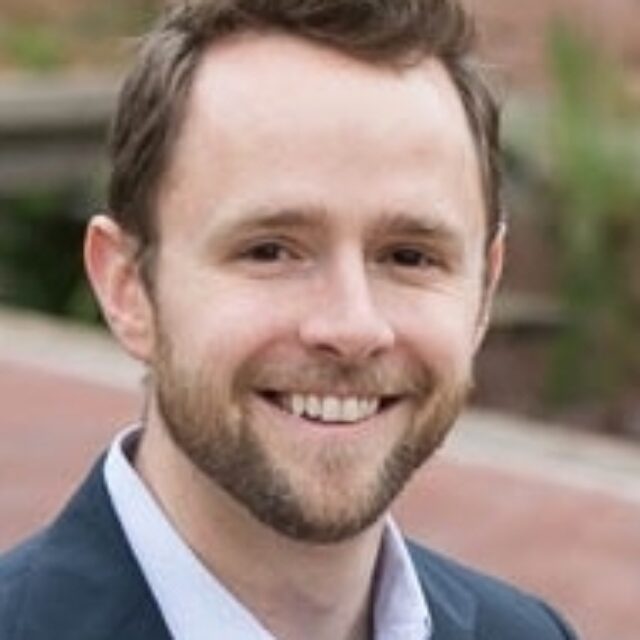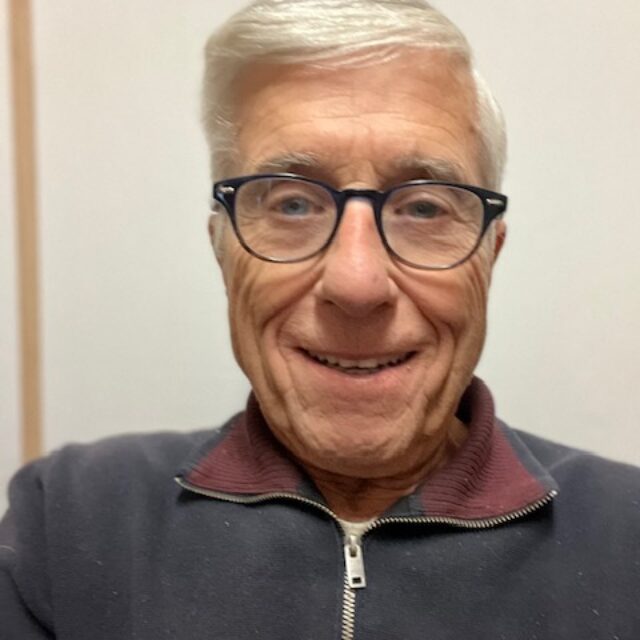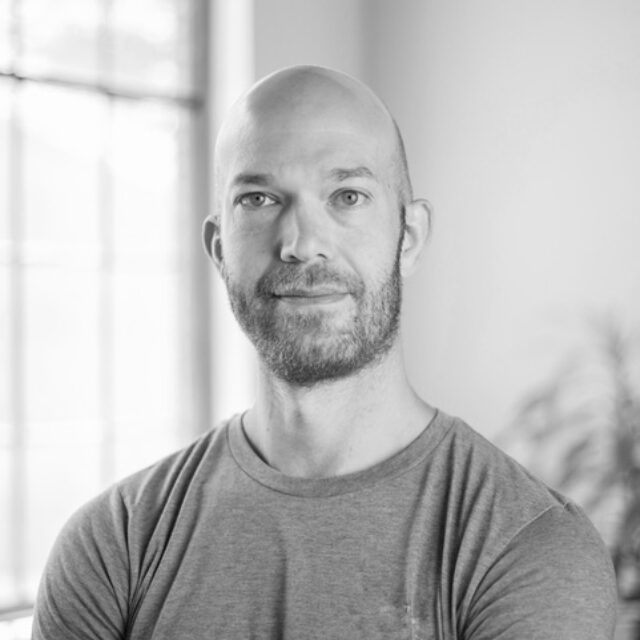Dr. Chris Knoepke: ERPO Implementation and Effectiveness

8.1.2024
Safety In Numbers
Welcome to Everytown Research’s Safety in Numbers blog, where we invite leading experts in the growing field of gun violence prevention to present their innovative research in clear, user-friendly language. Our goal is to share the latest developments, answer important questions, and stimulate evidence-based conversations on a broad range of gun safety topics in a form that allows all of us to participate. If you have a topic you want to hear more about, please feel free to suggest it at: [email protected].
Sarah Burd-Sharps, Senior Director of Research
Note: The views, opinions, and content expressed in this product do not necessarily reflect the views, opinions, or policies of Everytown.
Dr. Chris Knoepke is a researcher at the University of Colorado Anschutz Medical Campus. His research includes how to implement effective methods of preventing firearm injuries, including voluntary gun storage programs and Extreme Risk Protection Orders (ERPOs).
How did you get involved with research on gun violence prevention?
I’m a social worker by training, so I came to this work with clinical experience working directly with people trying to sort things out in their lives. Sometimes there were big problems that needed creative solutions, and some were situations where the person needed the same types of support that lots of people need throughout their lives. The unfortunate reality is that normal interpersonal conflicts, depression, or anxiety can become tragic very quickly when a firearm is accessible.
I say that knowing full well that almost everyone who owns firearms across this country does so responsibly. I grew up in a home with firearms and go target shooting occasionally. We were exposed to the idea of what responsible and safe firearm ownership looks like. I believe that’s central to the view that a lot of firearm owners take with them, though I also see guns’ potential for escalating otherwise bad situations.
My area of research explores risk-based firearm prevention interventions, like Extreme Risk Protection Orders (ERPOs). Those tools are meant to address a very small sliver of people who have access to firearms, are at risk of using them in harmful ways, and when other ways of temporarily reducing that person’s access to firearms aren’t working. Among gun owners, there’s a pretty widespread belief that there are reasonable uses for firearms, but there are also certain circumstances when people should not have firearms readily accessible.
You co-led a study looking at the use of ERPOs specifically in Colorado, can you tell us about the design of this study?
Our work started as part of a bigger multi-state group led by April Zeoli and Shannon Frattaroli at University of Michigan and Johns Hopkins, respectively. We’ve been getting all of the documents associated with ERPO petitions across the state of Colorado. It led to a unique and interesting dataset where we can begin to tease out the kinds of cases where ERPOs are being used, as well as the circumstances under which they’re granted versus where a petition is denied.
What were some of the findings from this study?
Most notably, we’ve found that extreme risk petitions filed by members of law enforcement are far more likely to be granted than those petitioned for by other community members such as loved ones. In Colorado until May 2023, as in many states, the only parties who could file for an ERPO were law enforcement or family members. With these two groups, petitions filed by law enforcement were granted more than 90 percent of the time; those filed by other community members were granted fewer than one-third of the time.
One reason is because law enforcement is used to conveying information in a way that resonates with judges; they can articulate how someone is at risk. Another reason might be that law enforcement has access to information that community-based petitioners might not, like a history of criminal justice system involvement, prior interactions with police, or previous involuntary psychiatric holds. Finally, there’s a sense that law enforcement is an otherwise disinterested third party, so may be more credible because they are not perceived to have an agenda other than to promote community safety.
What we’re curious to find out is whether this pattern will continue for the new classes of petitioners. Since our initial data gathering, Colorado expanded the group of eligible ERPO petitioners to include healthcare professionals, mental health professionals, educators, and District Attorneys. The next steps of this research will be to examine whether and how those groups are petitioning and whether petitions from these new parties will follow the trend of petitions from community members or from law enforcement. As far as those who are receiving the orders, there was a startling trend. A higher than expected proportion of these petitions were for folks who reportedly posed a risk to a large number of people. It makes sense then, that when those threats are occurring, they get responded to with ERPOs. However, what that leaves off unfortunately, is the much bigger number of people who are at risk either primarily to themselves or those most immediately around them. What this indicates is that ERPOs are less likely to be a tool that a family member of someone who is suicidal seeks out.
Have you noticed any geographic patterns with ERPOs in Colorado?
In the context of ERPO, variations in rural versus urban law enforcement are especially relevant. Larger law enforcement agencies have different assets and resources than smaller departments. For example, if there is a high-risk search warrant associated with an ERPO, then it would be helpful to have somebody who does SWAT, personnel that might not be readily available in a small rural jurisdiction.
What we’ve seen in Colorado, as we’ve seen in other states as well, is petitions are highly localized not only to urban areas, but to a few specific places. For example, in California, it wasn’t just urban areas, but a lot of ERPO petitions were coming specifically from San Diego. In Colorado, a large proportion of our petitions (mostly from law enforcement) come from the Denver and Boulder areas. In more urban departments, officers can specialize within their roles.
In places where ERPO implementation has been successful, certain officers, sergeants, and other upper-level officials have become experts in processing, investigating, and filing for ERPOs on behalf of their departments. If you’re in a rural department of five or seven officers, that kind of specialization might not be possible.
Do variations in political attitudes affect how often ERPOs are used?
One of the other things we noticed in ERPOs in Colorado is the role of “Second Amendment sanctuary” jurisdictions. There are a number of counties across the state that have made pronouncements that they are, “Second Amendment sanctuaries.” However, what that means in practice varies. We knew such a proclamation could indicate local law enforcement deprioritized firearm rights restrictions or it could merely be a political statement to reflect the beliefs of the people in that county.
What we found is that “Second Amendment sanctuary status” does seem to reduce the number of ERPO petitions in those counties. It affected not only the proportion of petitions that are filed by law enforcement but also the proportion of petitions that are eventually granted. When we consider this outcome in a place like Colorado, where firearm violence is relatively evenly distributed across the state, then one may start to worry about missed opportunities for risk-based intervention, not only to prevent public mass violence that might immediately come to mind, but also for suicides and domestic violence.
Can you explain the ERPO education project that you’re working on with law enforcement agencies in Colorado?
We recently received a two-year grant from the Fund for a Safer Future and are leading a project with the Colorado Attorney General’s office and law enforcement agencies throughout the state. We’re updating training materials for law enforcement about ERPOs, based on adult education principles. The idea is to put this kind of information in front of law enforcement officers in a way that acknowledges the realities of their practice.
It’s very much designed around what we learned from our survey. In our trainings, we go through scenarios with law enforcement officers so that they get a sense of the types of cases for which ERPOs were designed, and then we present data about what members of their community said, something like, “80% of the people in your region of the state said that it would be at least sometimes appropriate for police to petition for an ERPO in a case like…”
We aren’t giving them specific guidelines for prescribing a course of action, but we’re presenting options they can consider when encountering a similar situation in their work. In this way, we can situate ERPOs as one tool among many in an officer’s toolbox to promote safety for the community and other officers.
What are some next steps for your research?
One of the things that we’re really excited about involves understanding the entire chain of how ERPOs work and where the opportunities to improve that process lie. One step that we need to better understand is documentation of firearm relinquishment and return. In Colorado, even when an order is granted, and there’s supposed to be documentation that the person either relinquished their firearms to law enforcement or that law enforcement served a search warrant and found firearms, that documentation isn’t always there. That then affects the petitioner’s, court’s, and owner’s understanding of when the order expires, and when and how the firearms are returned to the owner. There is, of course, concern both from firearm safety advocates on relinquishment and from firearm rights advocates on due process. Enumerating that process will be an exciting and useful part of ensuring that ERPOs are a trusted intervention and are being used fairly.
Will this work stay in Colorado, or is there some application for other states?
With the Bipartisan Safer Communities Act, there is likely to be expansion of ERPOs both across states and petitioner groups. That presents an opportunity because the kinds of states that will be implementing ERPOs in the next three years are going to be very different from the earlier states. You might be more likely to have states like Colorado, which has a relatively moderate political climate, and yet has the need to try to reduce suicide and other forms of firearm violence.
As we learn about ERPO implementation in Colorado, we are absolutely excited to share both the findings we have as well as the training for petitioners that has come out of it.
About Dr. Knoepke
Chris Knoepke is an Assistant Professor in the Division of Cardiology and on the Leadership Committee for the Firearm Injury Prevention Initiative at the University of Colorado Anschutz Medical Campus. His research includes how to include patient values and voice in complex medical decisions as well as how to implement effective methods of preventing firearm injuries, including voluntary gun storage programs and Extreme Risk Protection Orders. He holds a bachelor’s degree in psychology from Monmouth College, a Master of Social Work from Washington University in St. Louis, and a PhD in Social Work from the University of Denver.





